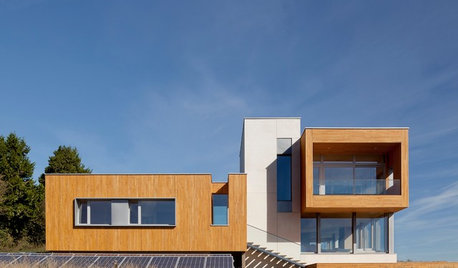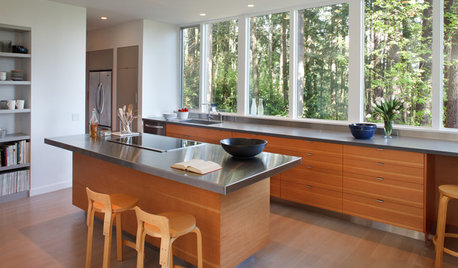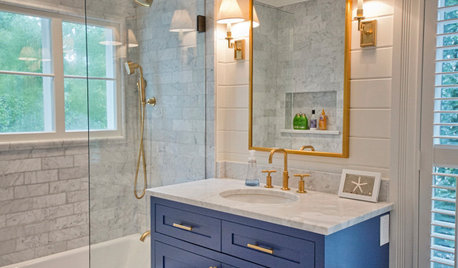trade off between better insulation and sunlight loss
hairmetal4ever
19 years ago
Related Stories

GREEN BUILDINGSunlight Used Right: Modern Home Designs That Harness Solar Power
Embracing passive heating principles through their architecture, siting and more, these homes save energy without skimping on warmth
Full Story
GREEN BUILDINGInsulation Basics: Heat, R-Value and the Building Envelope
Learn how heat moves through a home and the materials that can stop it, to make sure your insulation is as effective as you think
Full Story
REMODELING GUIDESCool Your House (and Costs) With the Right Insulation
Insulation offers one of the best paybacks on your investment in your house. Here are some types to discuss with your contractor
Full Story
MATERIALSInsulation Basics: What to Know About Spray Foam
Learn what exactly spray foam is, the pros and cons of using it and why you shouldn’t mess around with installation
Full Story
WINDOW TREATMENTSEasy Green: 9 Low-Cost Ways to Insulate Windows and Doors
Block drafts to boost both warmth and energy savings with these inexpensive but effective insulating strategies
Full Story
GREEN BUILDINGEcofriendly Cool: Insulate With Wool, Cork, Old Denim and More
Learn about the pros and cons of healthier alternatives to fiberglass and foam, and when to consider an insulation switch
Full Story
GREEN BUILDINGInsulation Basics: Natural and Recycled Materials
Consider sheep’s wool, denim, cork, cellulose and more for an ecofriendly insulation choice
Full Story
KITCHEN DESIGNPlay the Trading Game With Kitchen Storage and Views
Cabinets have their place, of course, but just imagine handling kitchen tasks with a glorious panorama for company
Full Story
GREEN BUILDINGOff the Grid: Ready to Pull the Plug on City Power?
What to consider if you want to stop relying on public utilities — or just have a more energy-efficient home
Full Story
BATHROOM DESIGN12 Designer Tips to Make a Small Bathroom Better
Ensure your small bathroom is comfortable, not cramped, by using every inch wisely
Full Story



sheila0
hairmetal4everOriginal Author
Related Discussions
Quality Vs. Quantity of Sunlight
Q
Does bubble wrap / pool cover block sunlight?
Q
Picea sitchensis 'Bentham's Sunlight'
Q
plants in less sunlight doing better than plants in full sun.
Q
vegomatic
hairmetal4everOriginal Author
moferg
hairmetal4everOriginal Author
ohiojay
hairmetal4everOriginal Author
ohiojay
markapp
hairmetal4everOriginal Author
markapp
hairmetal4everOriginal Author
ohiojay
markapp
hairmetal4everOriginal Author
hairmetal4everOriginal Author
markapp
hairmetal4everOriginal Author
hairmetal4everOriginal Author
markapp
hairmetal4everOriginal Author
ohiojay
pennsylvania_pete
hairmetal4everOriginal Author
pennsylvania_pete
vegomatic
hairmetal4everOriginal Author
hairmetal4everOriginal Author